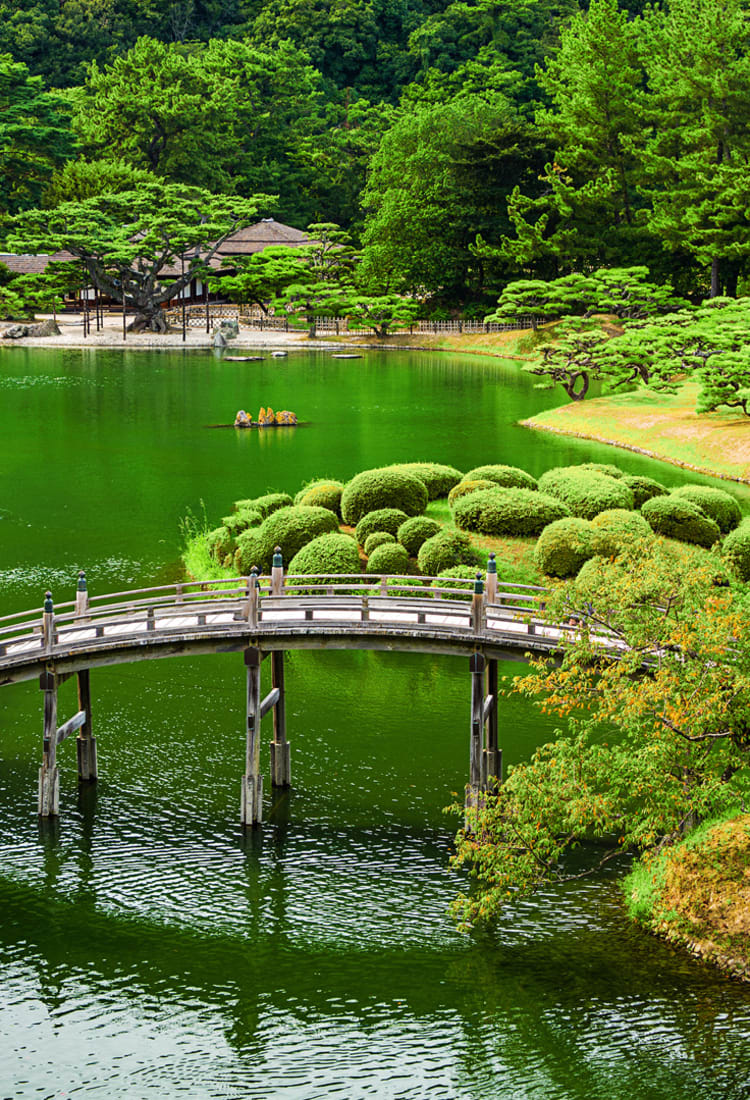
Kagawa Traverse udon and seafood kingdom
A Culinary Journey in Kagawa
Located on the northeastern coast of Shikoku, Kagawa Prefecture is Japan’s smallest prefecture, but what it lacks in size it makes up for with its rich tapestry of culture, history, and cuisine. Bordered by the Seto Inland Sea to the north, Kagawa enjoys a mild, temperate climate with warm summers and mild winters, making it an ideal prefecture for agriculture and aquaculture.
Kagawa is celebrated for its diverse agricultural produce, high-quality seafood, and various specialty cuisines. The prefecture is famously known as the "Udon Kingdom," thanks to its status as the heartland of Sanuki udon, a thick and chewy noodle that has become a culinary icon. Additionally, its island of Shodoshima, is famous for its production of Somen noodles (thin wheat noodles), particularly Shodoshima Somen, which are hand-stretched to achieve their delicate texture and smooth taste. The island is also renowned for its olive cultivation, the tradition leading to the creation of perhaps-unexpected products such as local olive oil, and olive-fed beef, which boasts a rich flavour and tender texture due to the cattle’s luxurious diet including the pulp of local olives that have been pressed to make oil.
As a pilgrimage sight and former center of trade, Kagawa has developed a diverse culinary heritage that blends local ingredients with influences from other prefectures. The prefecture's dedication to preserving its culinary traditions is evident in its many udon shops, some of which have been operating for generations. Festivals and events throughout the year celebrate Kagawa’s culinary delights, such as the Sanuki Udon Festival, where visitors can enjoy a variety of udon dishes. Renowned for the scenic Ritsurin Park, Naoshima Island, and other outdoor artworks showcased throughout the prefecture, Kagawa is sure to delight both your eyes and your tastebuds.
Savour the flavours of Kagawa, where people's passion for food and nature’s blessings come together seamlessly.
Sanuki udon

What it is (Ingredients)
Sanuki udon is a thick, chewy wheat noodle, renowned for its firm texture and smooth consistency. Made from high-quality wheat flour, salt, and water, these noodles are crafted using a unique kneading technique that gives them their characteristic springiness. They are often served in a variety of dishes, including Kake udon (udon with hot broth), Kamatama udon (udon with egg and sauce), and bukkake udon (udon served with cold broth and toppings).
History/Origin
Sanuki udon hails from Kagawa, formerly known as Sanuki Province, and boasts a rich history that dates back over a thousand years. The prefecture's favourable climate and fertile soil contribute to the production of superior wheat, which is essential for making these high-quality noodles. The traditional techniques used in crafting Sanuki udon have been perfected and passed down through generations, solidifying its status as a culinary icon of Kagawa.
Where to Eat
Sanuki udon is ubiquitous in Kagawa, with numerous specialty udon shops scattered throughout the prefecture. These eateries, often family-run, offer a variety of udon dishes, allowing visitors to experience the noodles in different forms. Udon tourism is popular in Kagawa, where enthusiasts travel from shop to shop, sampling the unique flavours and preparations.
When to Eat
Sanuki udon is enjoyed year-round, with different serving styles to suit the seasons. In the hot summer cold udon dishes offer a refreshing meal, while hot and brothy versions provide warmth and comfort in the colder months.
Embark on a culinary journey in Kagawa with Sanuki udon, and discover the delightful texture and flavour that have made these noodles a beloved staple for centuries.
Olive Hamachi (Olive yellowtail)

What it is (Ingredients)
Olive Hamachi is a premium variety of yellowtail fish, raised on a diet that includes olive leaf powder, giving the fish a unique and rich flavour. The diet enhances the meat's quality, making it more tender and imparting a subtle, refined taste. Olive Hamachi is commonly served as sashimi, sushi, or grilled.
History/Origin
Olive Hamachi originated in Kagawa, inspired by the concept of merging olive and yellowtail to celebrate the 100th anniversary of olive planting and the 80th anniversary of yellowtail aquaculture within the prefecture. Extensive research and experimentation resulted in a unique, high-quality fish, which quickly became popular for its outstanding taste and texture.
Where to Eat
Olive Hamachi is widely available in Kagawa prefecture, from high-end sushi restaurants to casual dinners. When in season, it can also be found in the food courts of roadside stations.
When to Eat
Olive Hamachi is typically available from September to January, when the fish is fattier and more flavourful. Served as fresh sashimi, lightly seared, or grilled, olive Hamachi offers a luxurious dining experience highlighting the best of Kagawa's innovative aquaculture.
Indulge in the exquisite taste of olive Hamachi and experience how this unique Hamachi is leading Kagawa's culinary excellence.































































